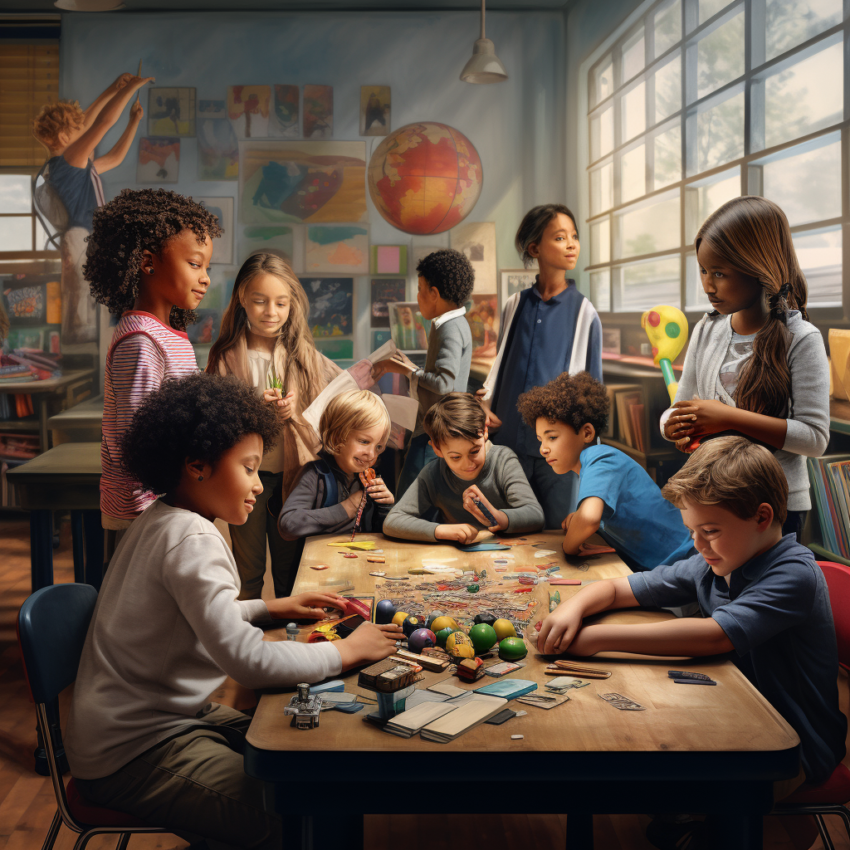In the fast-paced world of education, fostering creativity and critical thinking skills in students has never been more critical. Traditional teaching methods, while valuable, often leave limited room for these essential attributes to flourish. However, there’s a delightful solution to this dilemma: the introduction of classroom play. In this blog post, we will explore the importance of fostering creativity and critical thinking through play-based learning, and we’ll provide practical strategies and examples to bring this concept to life in your classroom.
Why Play Matters in Education
Play is a powerful tool that unlocks the doors to creativity and critical thinking. When students engage in play, they enter a world of imagination, where the boundaries of reality become fluid, and problem-solving becomes an exciting adventure. Here’s why play matters in education:
- Freedom to Explore: Play allows students to explore and experiment without the fear of failure. It encourages them to push boundaries and discover new solutions.
- Imagination Unleashed: In the world of play, imagination reigns supreme. Students can invent scenarios, create characters, and envision limitless possibilities.
- Risk-Taking: Play encourages students to take calculated risks and embrace challenges, an essential skill in the real world.
- Active Engagement: Play is an active, hands-on learning experience that keeps students engaged and eager to participate.
- Collaboration and Communication: Through play, students learn to collaborate, communicate effectively, and work together to achieve common goals.
Practical Strategies for Fostering Creativity and Critical Thinking
Now, let’s delve into practical strategies for incorporating play into your classroom to nurture creativity and critical thinking:
1. Storytelling and Role-Playing Games (RPGs)
Storytelling is a potent tool for fostering creativity. Encourage students to create and share stories, whether through written narratives or oral presentations. Additionally, consider introducing Role-Playing Games (RPGs) like Dungeons and Dragons. These games immerse students in imaginative worlds, where they must make decisions, solve problems, and collaborate with others. RPGs teach students that their choices have consequences, fostering critical thinking.
2. Creative Art Projects
Art offers a canvas for self-expression and creativity. Assign creative art projects that encourage students to explore various mediums like painting, sculpture, or digital art. Ask them to reflect on their work, explaining the choices they made and the emotions or ideas they intended to convey.
3. Problem-Solving Challenges
Create problem-solving challenges or puzzles that require students to think critically and find solutions. These can range from simple brain teasers to more complex scenarios that mirror real-world challenges. The key is to promote analytical thinking and adaptability.
4. Group Collaborative Projects
Assign group projects that require students to collaborate and pool their creativity and critical thinking skills. For example, they can work together to design and present a solution to a real-world problem or create a multimedia presentation on a complex topic.
5. Experiential Learning
Take learning outside of the classroom through experiential activities. This can include field trips, outdoor experiments, or hands-on experiences that immerse students in their subjects. These activities provide a different perspective and encourage students to think critically about their surroundings.
Examples in Action
Let’s explore a couple of examples where play-based learning enhances creativity and critical thinking:
Example 1: Storytelling with “Choose Your Own Adventure” Stories
Introduce “Choose Your Own Adventure” stories, where students write and illustrate their narratives with branching storylines. This activity not only promotes creative writing but also requires critical thinking as students consider the consequences of each choice.
Example 2: Classroom Escape Room
Create a classroom escape room challenge. Students must work together to solve puzzles, riddles, and clues to “escape” within a time limit. This activity fosters collaboration, critical thinking, and creativity while making learning a thrilling adventure.
Play Unlocks Potential
Incorporating play into the classroom isn’t just about having fun; it’s about empowering students to become creative thinkers and problem solvers. By offering opportunities for imaginative exploration, collaborative play, and real-world challenges, educators can foster the skills that students need to thrive in an ever-changing world. So, embrace the power of play, and watch as your students’ creativity and critical thinking soar to new heights.

